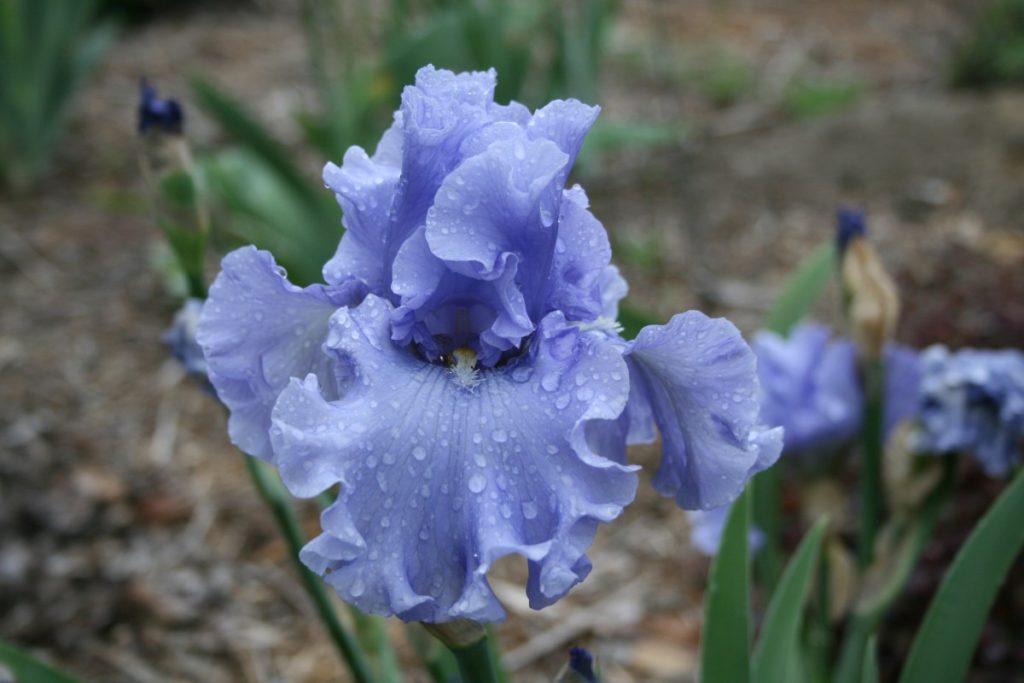
Rivers of Iris
Hundreds of Louisiana iris varieties populate the low-lying swales that help drain excess moisture from the Tea Garden and Camellia Trail areas. After a heavy rain, slow-moving water flows through the iris plants in the picturesque, gently bending “rivers.”
Louisiana irises are hybrids bred from five iris species native to the American South: Iris fulva, Iris giganticaerulea, Iris hexagona, Iris nelsonii and Iris brevicaulis.
Famed painter and ornithologist John James Audubon was the first to call a Louisiana iris by that name. While living in Louisiana in the 1820s, he painted a pair of warblers and included a rose-colored iris in the background, noting it was a “Louisiana flag.”
Peak bloom at the Rivers of Iris is in April and early May. When admiring the rivers in flower, the effect suggests a Monet painting. In the breeze, the iris petals flutter like butterflies.

Iris Trial Beds
Hundreds of iris cultivars are being evaluated for their performance in the local soil and climate. Most plants in the trials are either tall bearded iris or spuria iris, and are typically in flower from late March to mid May.
These irises are being grown in raised beds for improved drainage. This aims to diminish the harmful effects of the rainy and humid Savannah summers.
Numerous factors are being observed and noted, such as disease resistance, abundance and consistency of bloom, and general plant vigor. All will help determine which iris varieties are viable over the long term in the Low Country.
Knowledge gained from these trial beds will benefit local gardeners who wish to include these types of irises in their home landscapes.